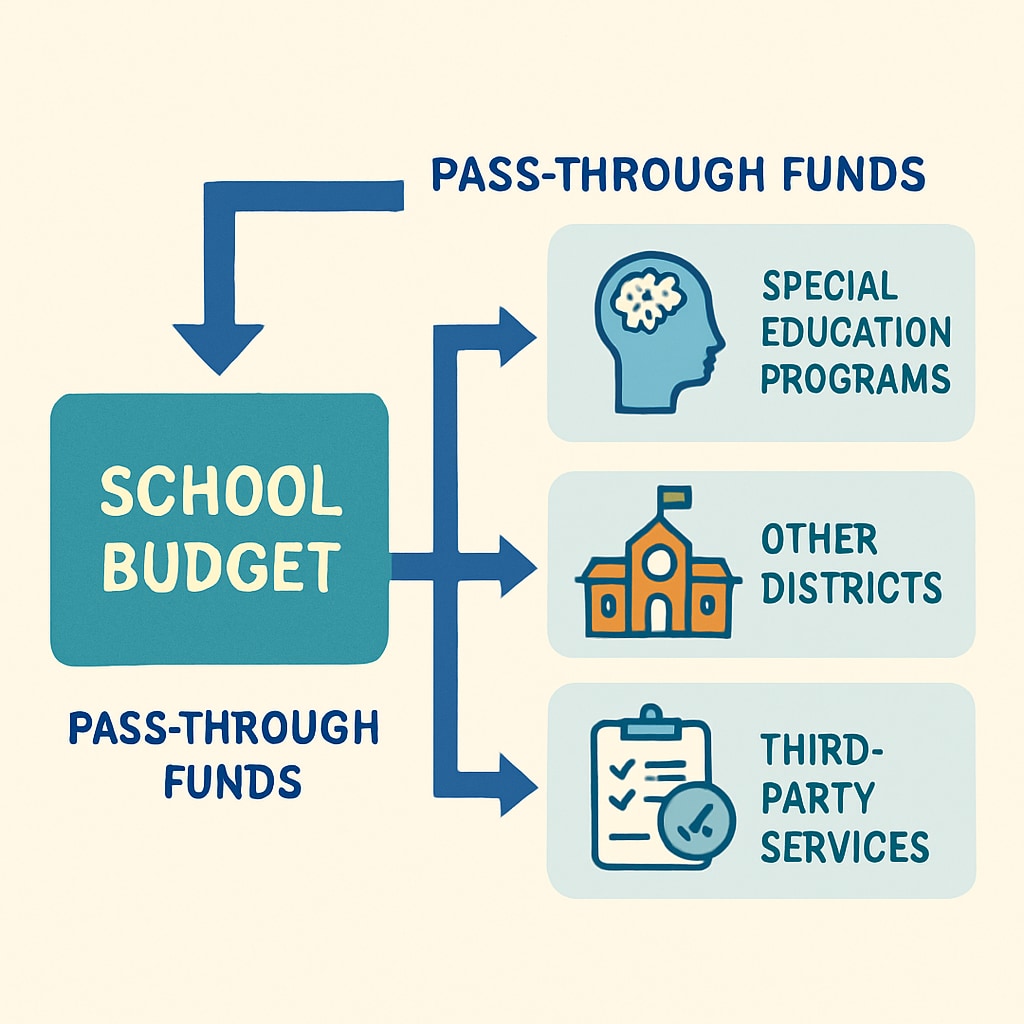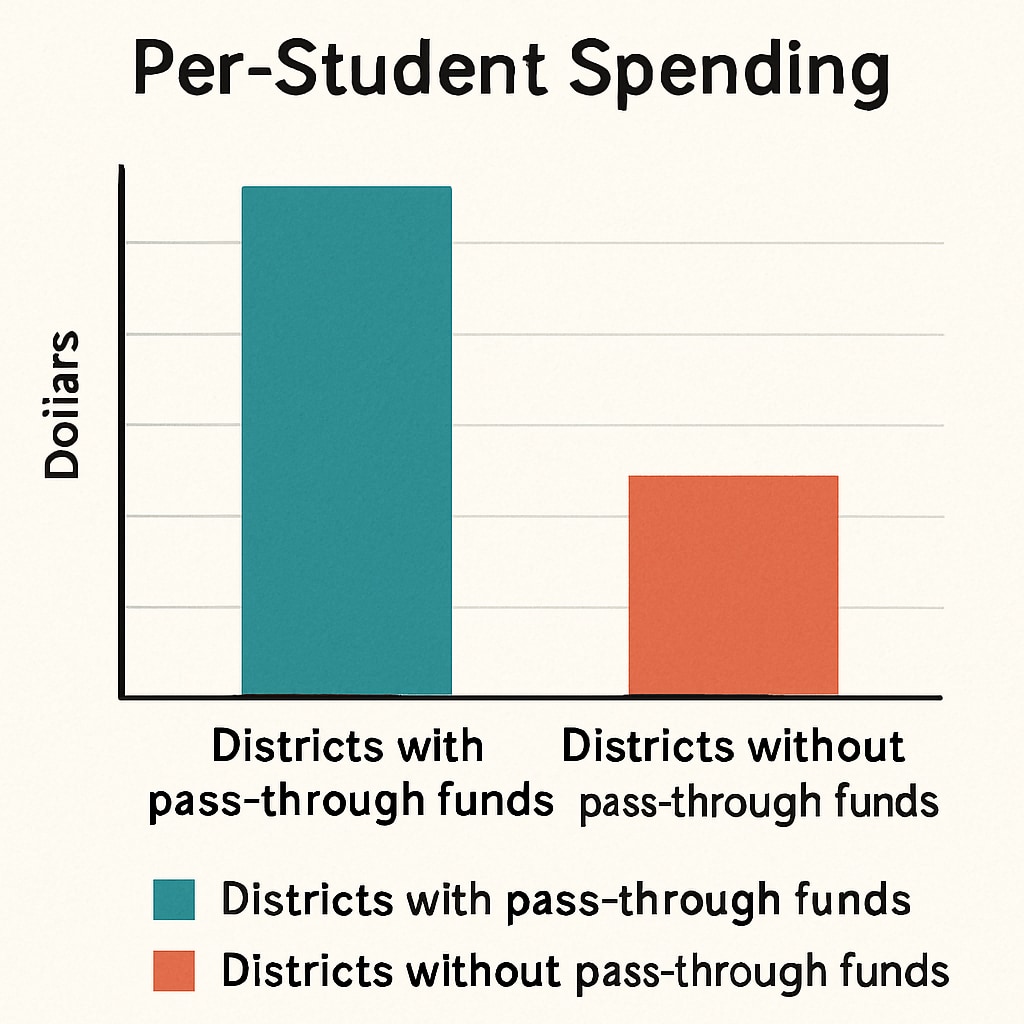Per-student spending is often used as a key metric to evaluate how well schools are funded. However, the inclusion of pass-through funds in school budgets can significantly distort this measure. Pass-through funds, which are financial transactions where funds are allocated to schools but ultimately redirected or used for external purposes, can artificially inflate per-student spending data. This article examines the implications of pass-through funds on K12 education budgets and advocates for greater transparency to ensure equitable distribution of resources.
The Basics of Pass-Through Funds in School Budgeting
Pass-through funds are a common mechanism in school financing. These funds are allocated to school districts or institutions but do not remain within the school system; rather, they are passed along to other entities, programs, or contractual obligations. For example, a portion of the allocated budget might be earmarked for external services, such as special education programs, vocational training, or transportation services provided by third-party vendors.
While pass-through funds serve important purposes, their inclusion in per-student spending data can create misleading impressions. This is because the total financial allocation appears higher, even though not all funds directly benefit students or enhance classroom learning experiences. As a result, stakeholders—parents, policymakers, and educators—might assume that schools are better funded than they truly are.

How Pass-Through Funds Inflate Per-Student Spending Data
One of the primary impacts of pass-through funds is their potential to inflate per-student spending statistics. Per-student spending is calculated by dividing total school funding by the number of enrolled students. However, when pass-through funds are included in this calculation, the result can be artificially high. For example:
- Funds allocated to external programs—such as state-mandated initiatives—may account for a significant portion of a school’s budget but do not directly contribute to classroom resources.
- Transportation or community service expenses might be included in the calculation, even though these expenditures do not directly affect educational outcomes.
As a result, policymakers and administrators may overestimate the financial health of a school district, potentially limiting further investment or misdirecting resources to areas that appear adequately funded.

The Call for Transparency in Education Finance
Given the potential distortions caused by pass-through funds, it is essential to adopt more transparent financial practices in K12 education. Transparency can be achieved through the following measures:
- Separate Accounting: Clearly delineate pass-through funds from direct educational expenditures in school budgets.
- Detailed Reporting: Provide stakeholders with comprehensive reports that explain how funds are allocated and used.
- Revised Metrics: Develop alternative metrics to evaluate per-student spending, focusing on funds that directly impact classroom learning and student outcomes.
By implementing these practices, schools and districts can ensure that financial data accurately reflects the resources available for students. Transparency not only aids in equitable resource distribution but also builds trust among parents, educators, and policymakers.
Conclusion: Rethinking Per-Student Spending
Pass-through funds play an important role in school financing, but their inclusion in per-student spending calculations can lead to significant distortions. To ensure that education funding data is both accurate and meaningful, schools must adopt transparent accounting practices that distinguish between direct expenditures and redirected funds. By doing so, stakeholders can make more informed decisions, fostering an equitable and effective education system for all.
Readability guidance: This article uses short paragraphs and lists to summarize key points. It avoids excessive jargon and balances active voice with occasional passive constructions to maintain clarity. The placement of images aligns with the content flow, enhancing visual understanding of the discussed concepts.


